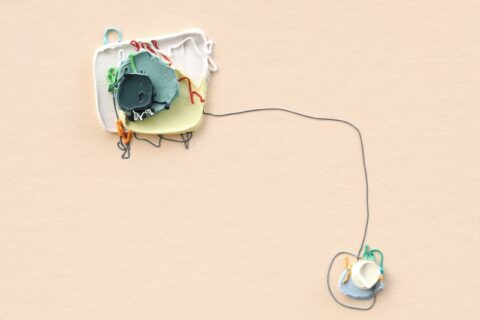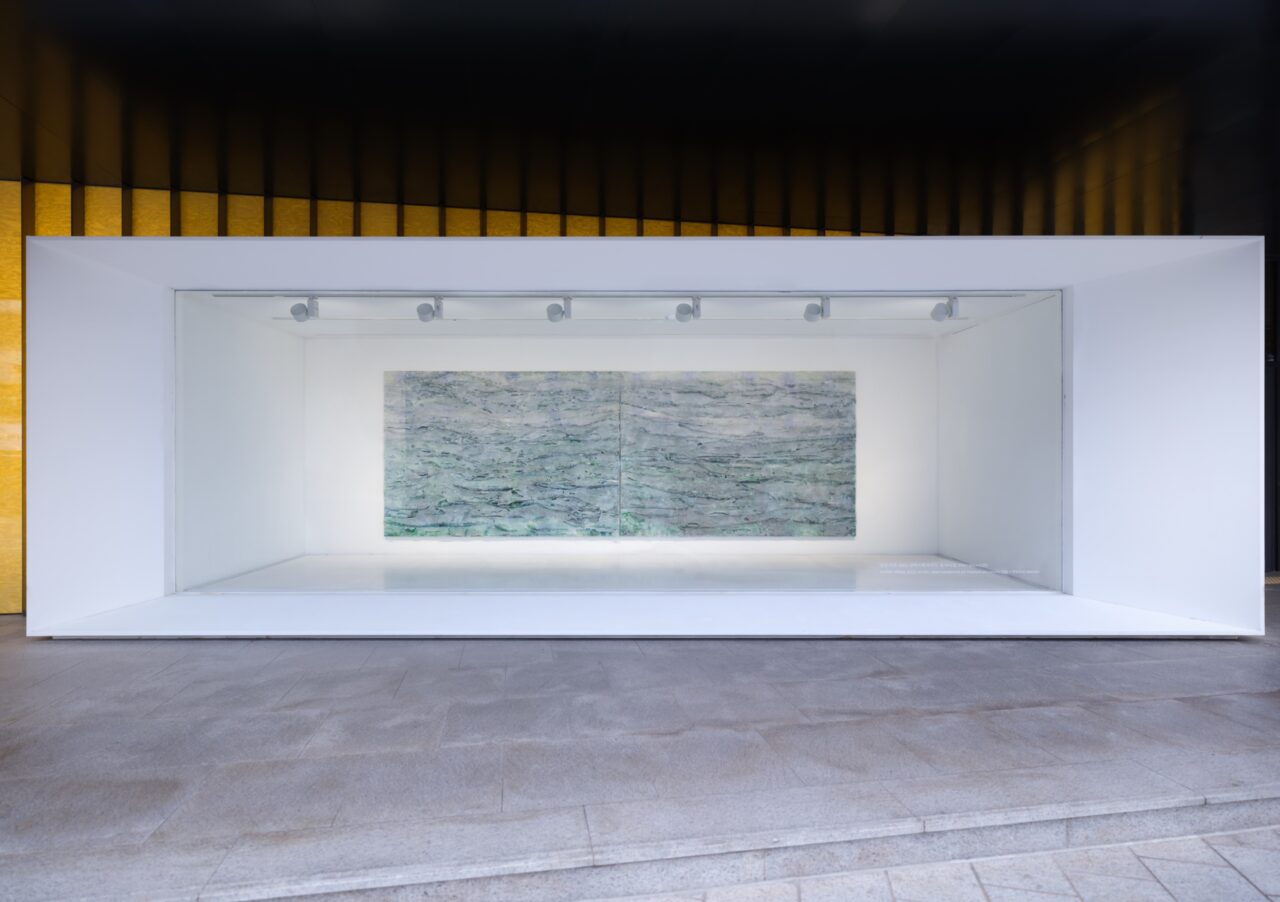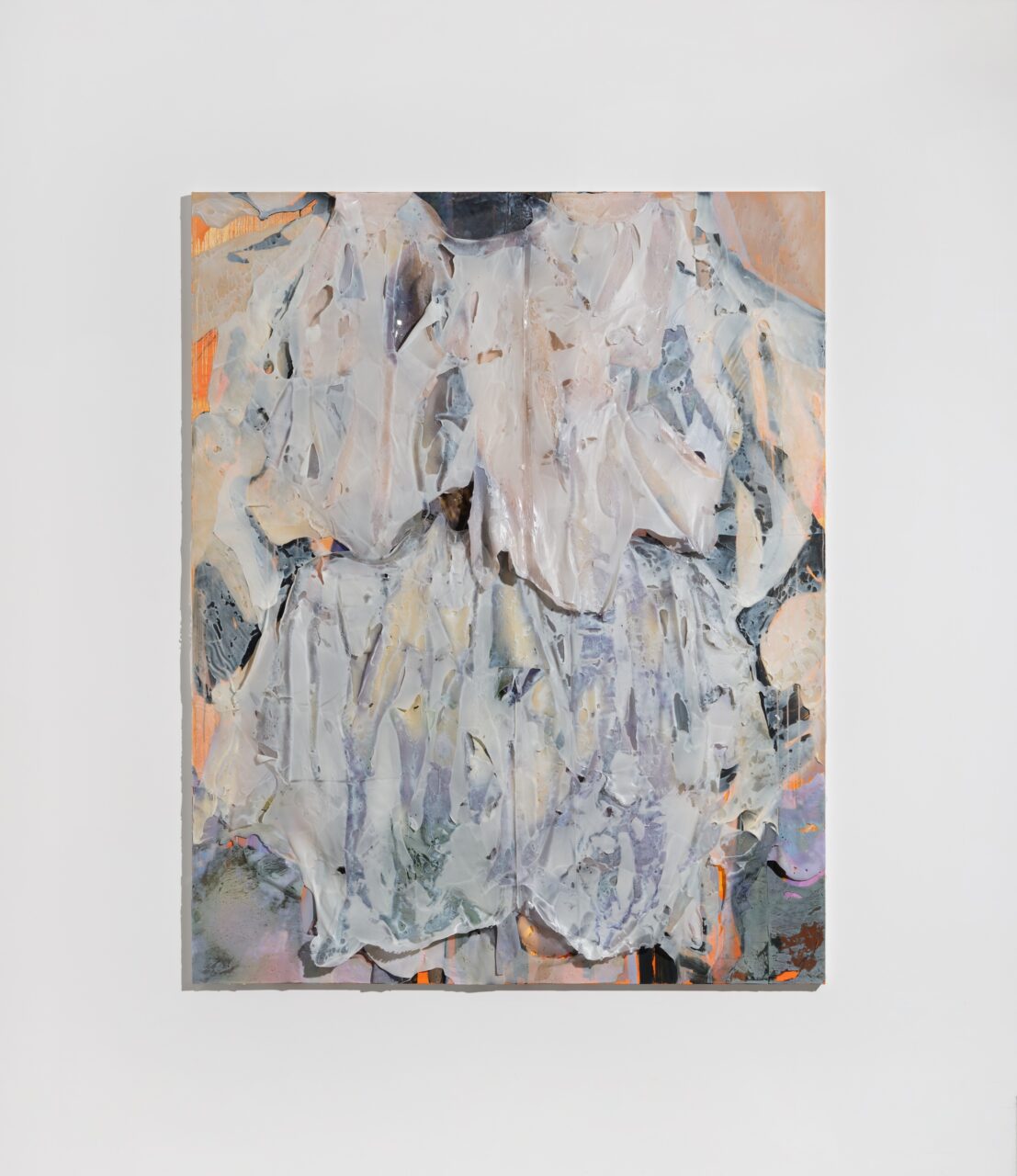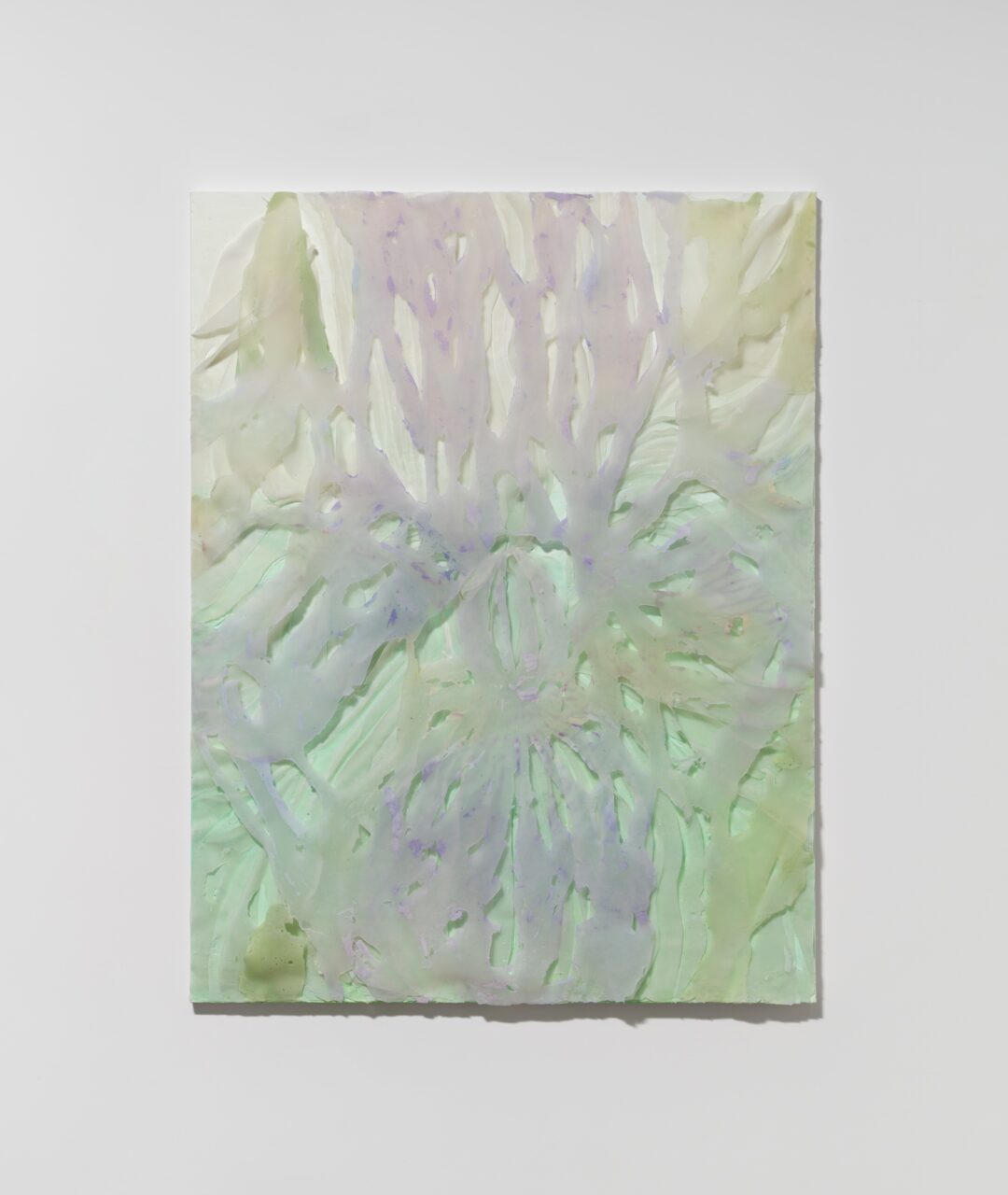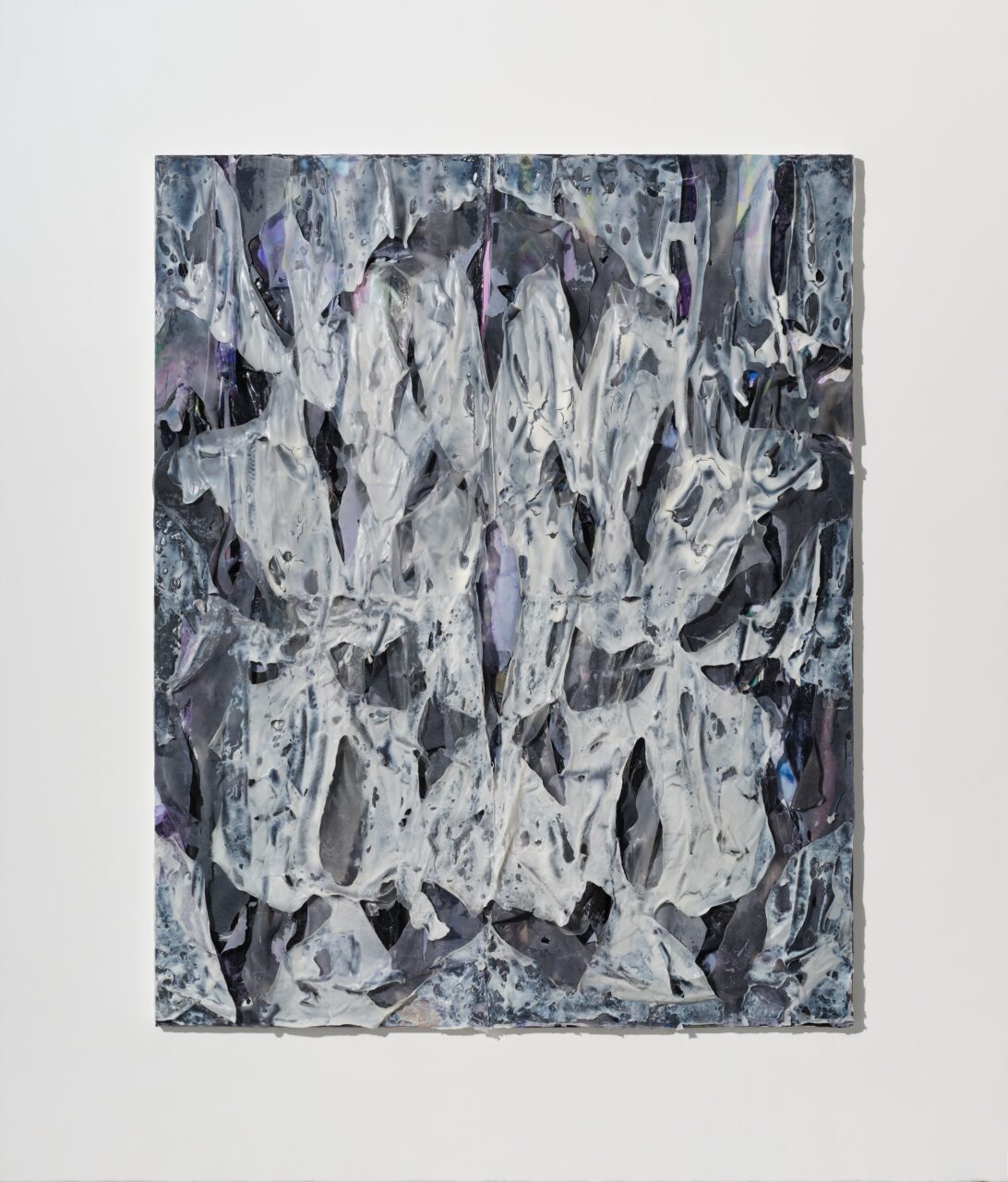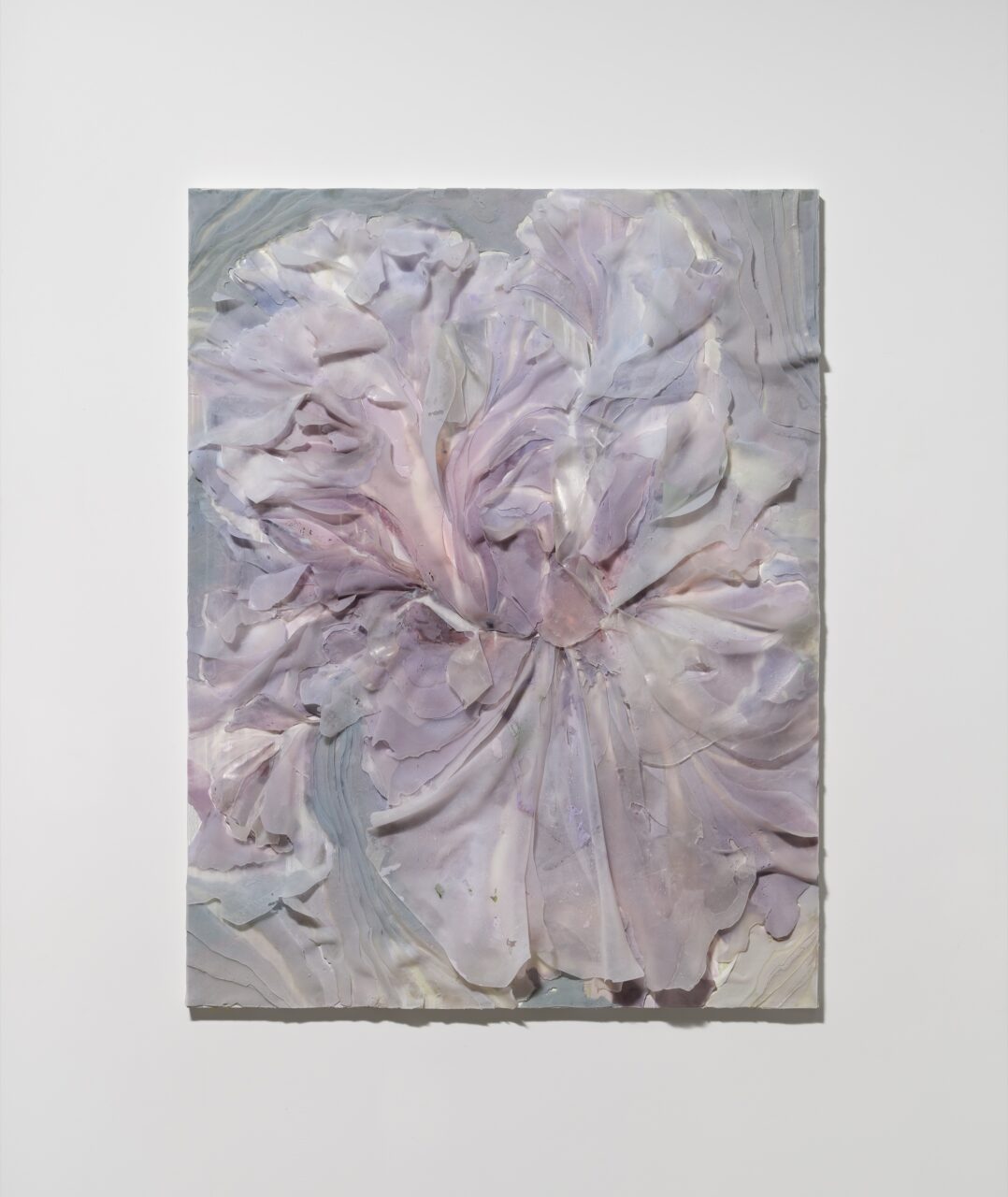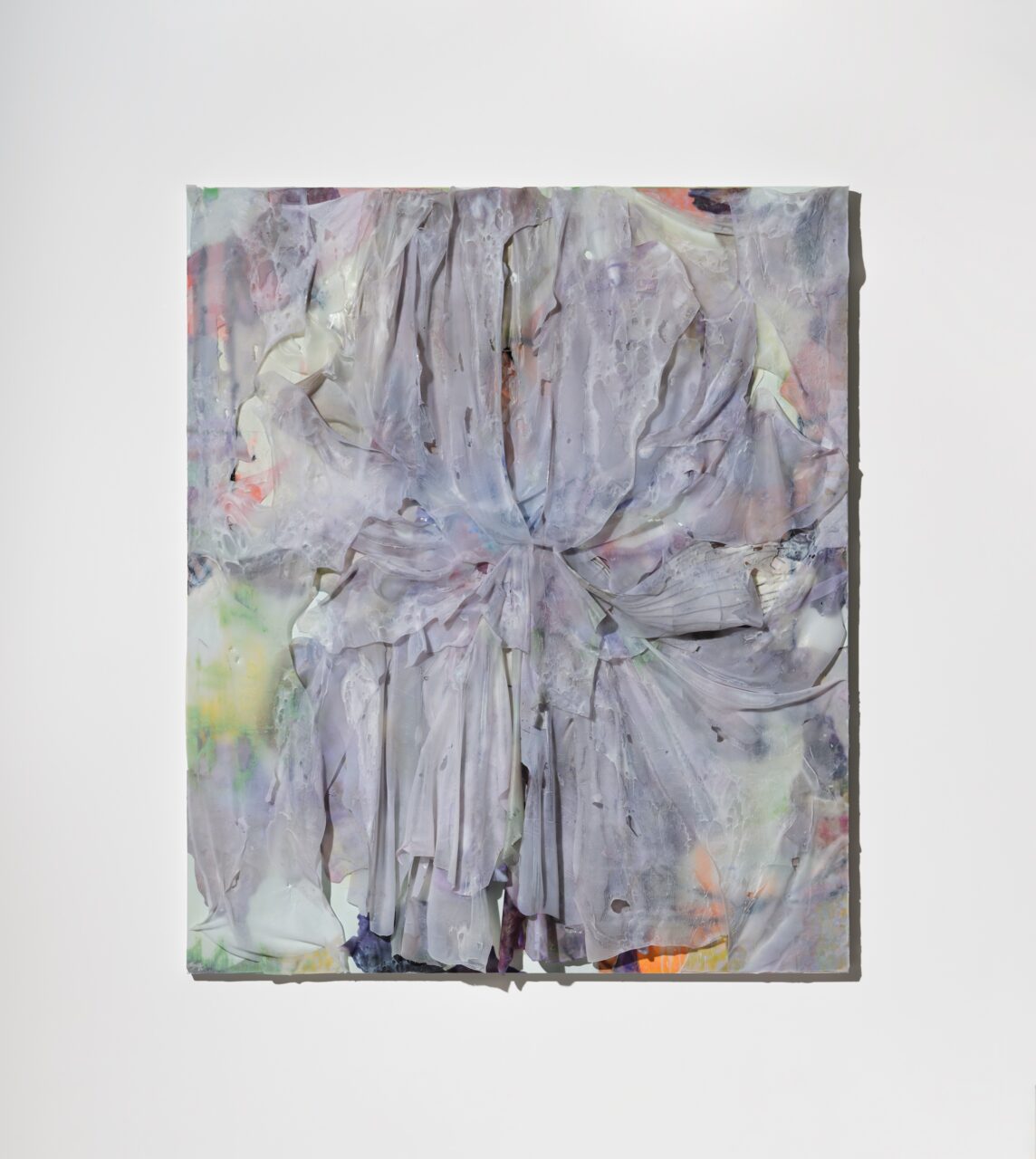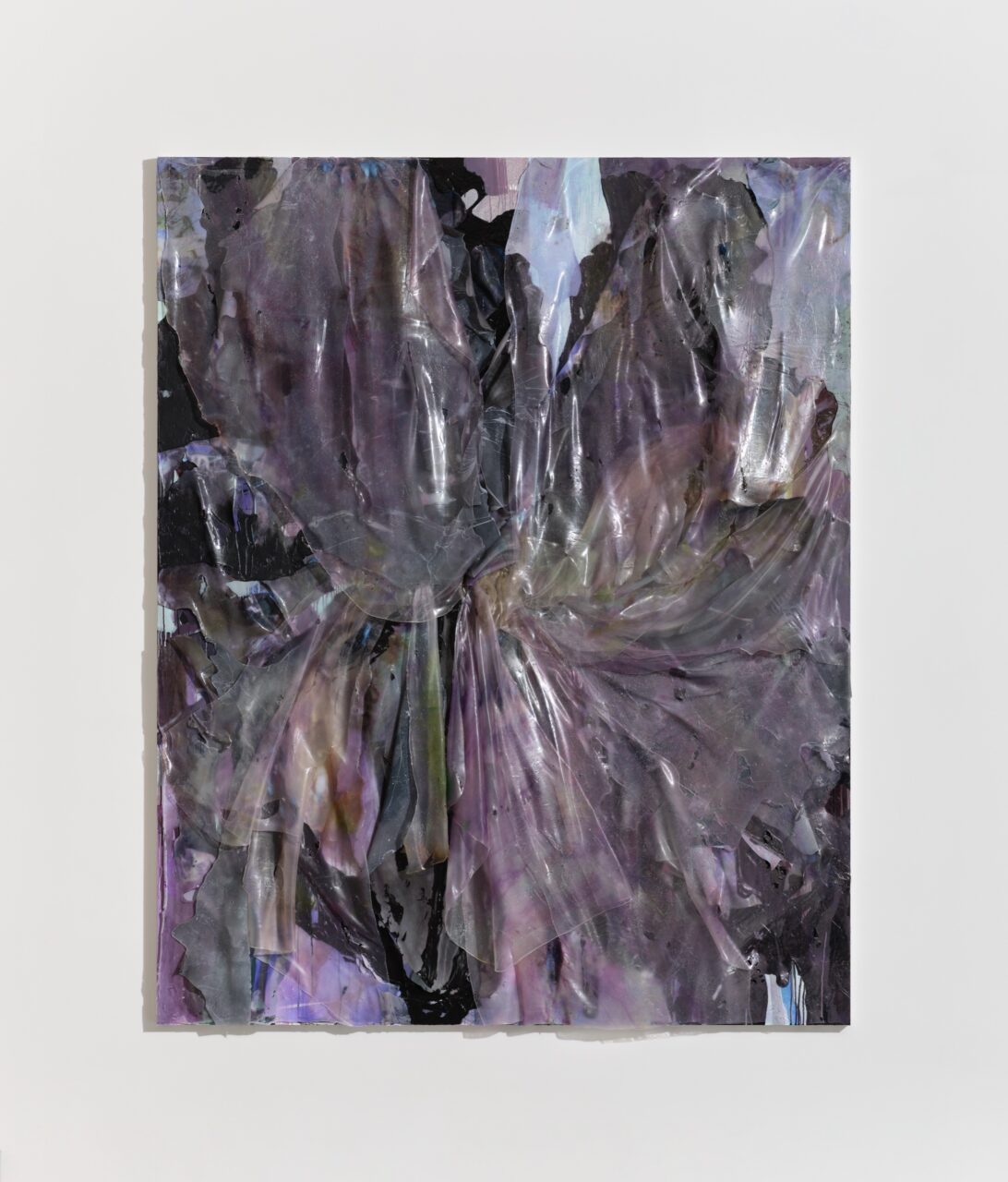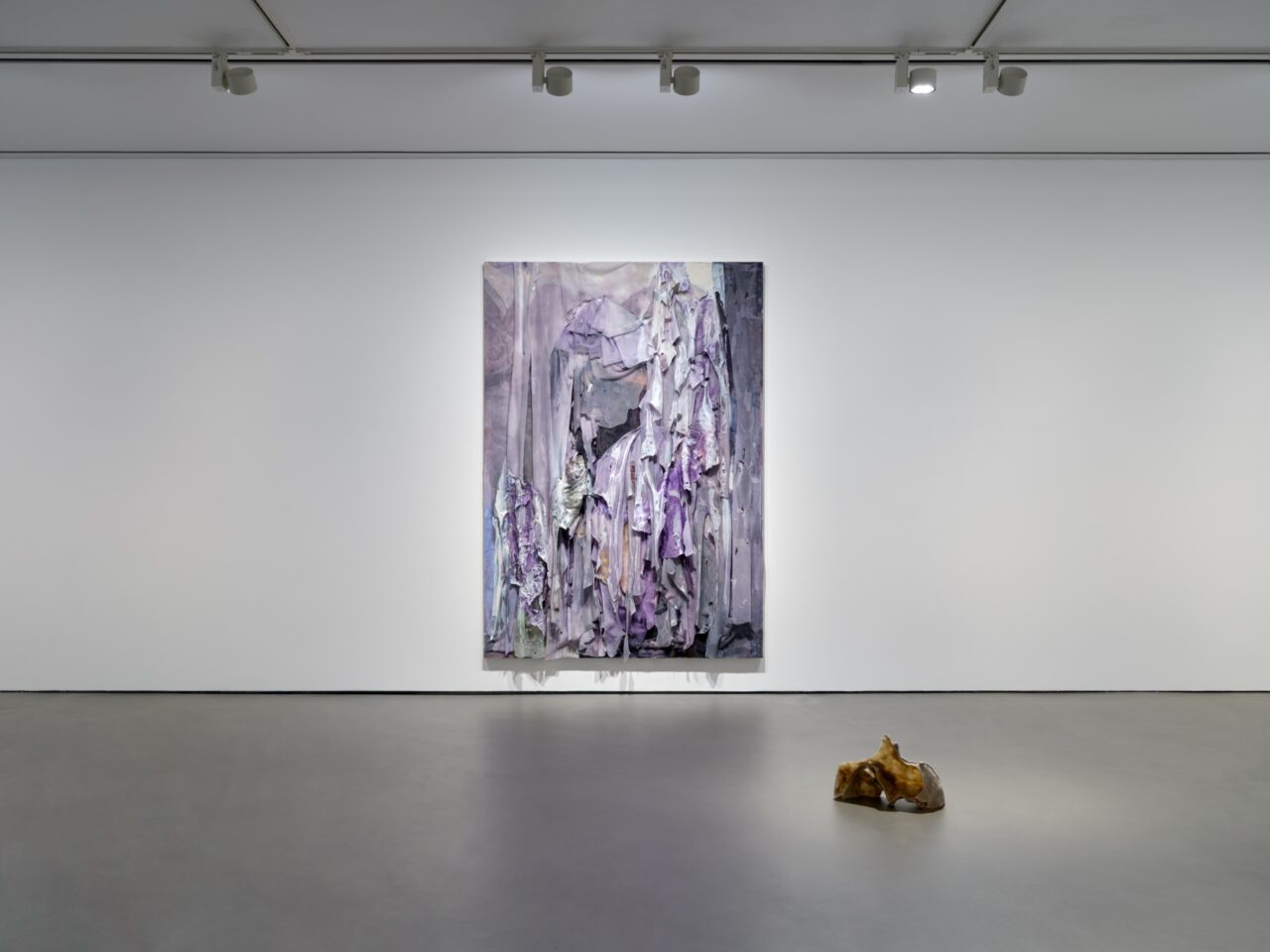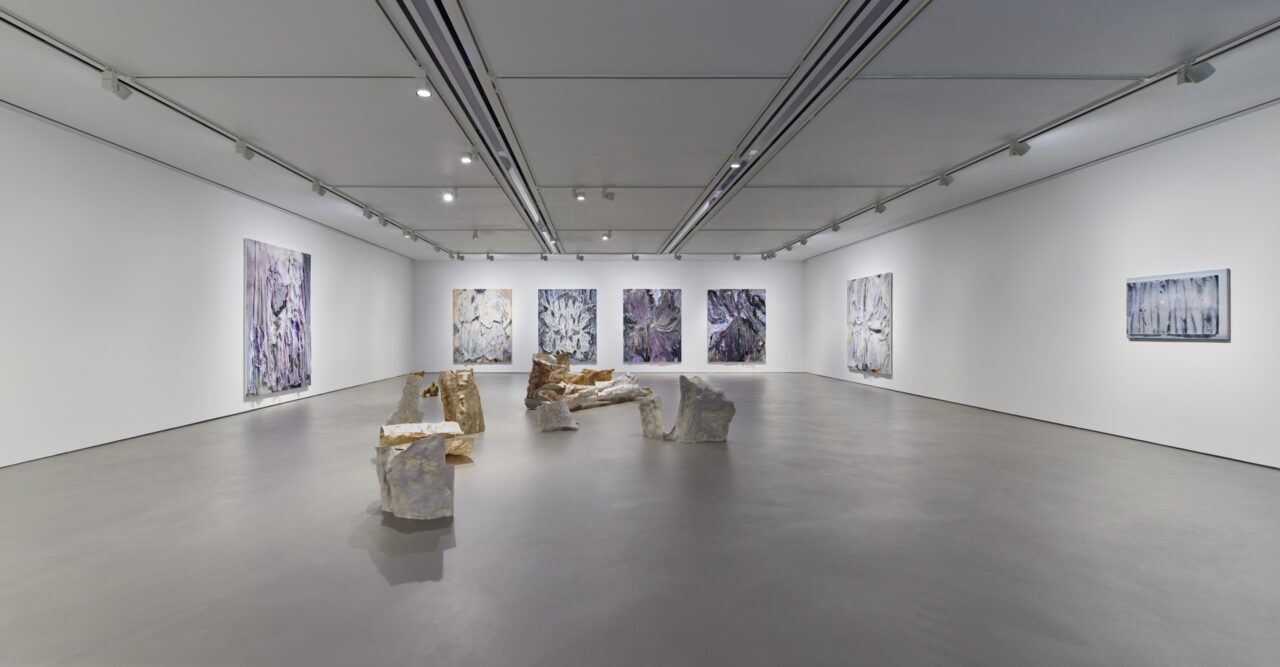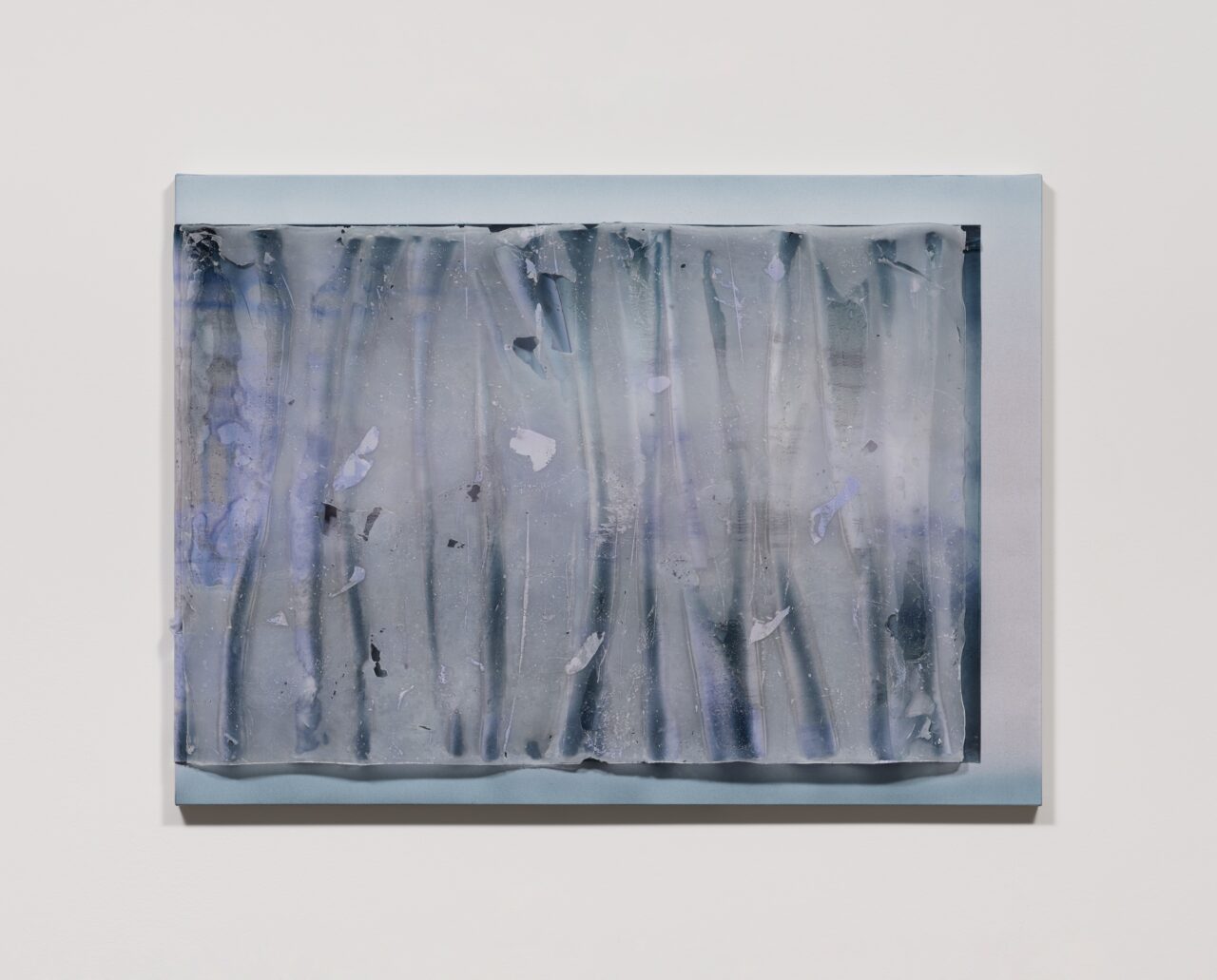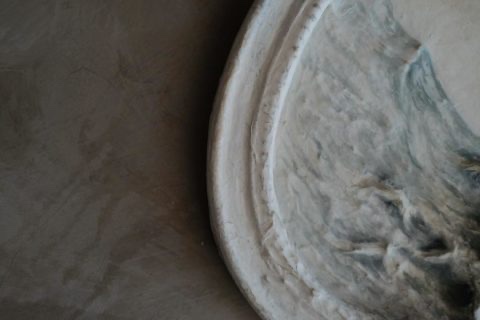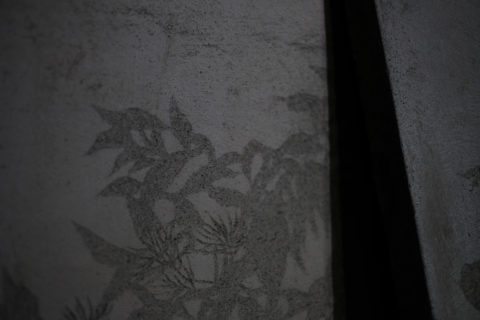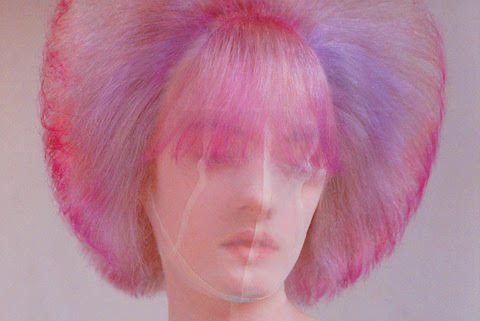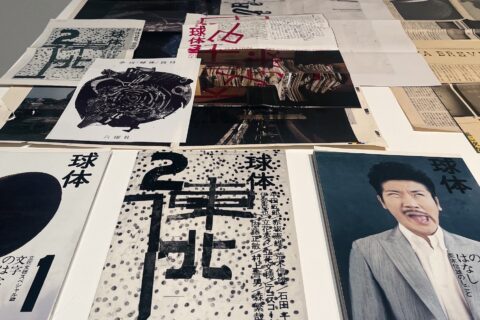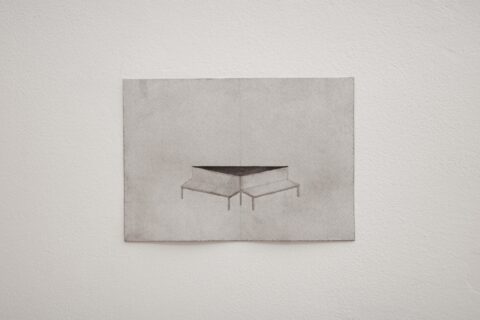「對我來說,藝術是透過探索周遭的事物來解讀我身處的環境的過程。」—— 鄭煕慜
一層又一層的透明薄膜的堆疊、散開、收緊、垂落,把噴墨轉印在層層交疊的丙烯酸纖維上,有誰能想像作品上的圖像是來自「網上圖片」?對韓國藝術家鄭煕慜來說,傳統的繪畫功能在很大程度上被攝影取代,如何在創作過程中尋找超越描繪符號意義,這才是重要的事。她的作品以處理像素化的圖像代替了傳統對事物的描繪,像為圖像編寫程式一樣;觀眾了解她的作品時,又像一個解密的過程。她嘗試打破傳統的繪畫方式,把靜物畫的演繹推向另一層次的想像。有時候,繪畫是在畫布上探索世界的一種方式;有時候,則是在畫布上打開一個空間、建立另一個世界。鄭煕慜遊走在這兩者之間,帶來了創新的當代藝術表現的形式。
“To me, art is a process of deciphering the underlying logic of the physical reality I inhabit by exploring surrounding objects.” —— Heemin Chung
Layer upon layer of transparent film is stacked, scattered, tightened, and draped. Inkjet transfers onto overlapping layers of acrylic fibers; who would have thought that the images on the artwork are sourced from online? For Korean artist Heemin Chung, the traditional function of painting has largely been replaced by photography, and what matters is to go beyond the depiction of symbolic meanings during the creative process. Instead of traditional representations, she works with pixelated images, resembling image programming. Engaging with her art becomes a process of decoding for viewers. She strives to break away from conventional painting methods and elevate the interpretation of still life to another level of imagination. At times, painting serves as a means to explore the world on canvas, while other times, it creates a space and establishes an entirely new world. Chung navigates between these two realms, introducing innovative forms of contemporary artistic expression.
OB:OBSCURA
HC:Heemin Chung
OB:可以談談你上一個在首爾的個人展覽「Receivers」?你怎樣把數據轉移成作品?
HC:近年來,我一直在重新審視傳統的繪畫主題,例如是風景、靜物和花卉在當代視覺藝術中的脈絡,同時探索非傳統的繪畫表達方式,解放塑膠彩顏料的性質和色彩。去年在首爾的個人展覽「Receiver」是通過探索自然物體和它們產生的物質狀態來進行反思。創作這些作品時,我組合了網絡上由不同人分享的自然事物的相片掃描,包括它們的紋理、圖像或是結構。展覽中的作品承載著傳輸或轉移被數據化的自然事物,或是複製和模仿自然的形態,或是吸收背景或環境。透過重新「物質化」它們,這些看似熟悉的物體以不同的方式組合,猶如一個尚未被探索、談論的新自然。我還嘗試灌注花朵精神上的、療癒的力量於作品之中。
我希望這個展覽能成為我在過去多年對自然物體進行研究和實踐的一個總結。
OB:可以談談你如何選擇物料來創作嗎?
HC:我喜歡學習使用新的工具和創作技巧,並且顛覆傳統、理性地運用材料的方式。因此,對於圖像處理和創作方法也是不受約束的。自2017年起,我一直專注於未與顏料混合的塑膠彩(丙烯酸纖維)的透明與半透明的特質,這材質能增加顏料的體積或複製其他材質,它可以在平面上呈現浮雕的效果,甚至是以雕塑的形態展示。我會先使用這材質在畫布上塑造形式,然後通過印刷或噴灑來上色,在過程中創造「感官差異」,作為隱喻基礎來構建作品。
OB:為什麼會選擇繪畫為你的創作方式?
HC:敍事往往從畫布的限制和邊界開始,傳統上繪畫的各種限制反而讓我著迷,並激勵著我繼續挑戰自己。傳統繪畫的基礎是能明顯地指示出某時間、空間,因此,利用畫布作為媒介去打破的固有的觀念和感知是最為重要的。選擇風景、靜物、花卉等傳統主題,可被視為我們觀看事物的距離的一種表達。我相信繪畫是我們觀看和感知世界的一種方式,尤其是記錄著觀看方式的變化。
OB: Can you talk about your previous solo exhibition, Receivers, that took place in Seoul? How did you transform data into artworks?
HC: In recent years, I have been reexamining traditional painting subjects, such as landscapes, still life, and flowers, within the context of contemporary visual art. I also sought to explore non-traditional forms of expression, with a hope to liberate the nature and colors of acrylic paints. The exhibition, Receivers, was a reflection of the exploration of natural objects and the material states they produce.
In creating these works, I combined the textures, images, and structures of the scanned photographs of natural objects shared by different individuals on the internet. They carried the transmitted or transferred digitized representations of natural objects, or replicated and imitated natural forms, or absorbed backgrounds or environments. By re-materializing them, these seemingly familiar objects were combined in various ways, resembling a new nature that has yet to be explored or discussed. I also attempted to infuse the spiritual and healing power of flowers into the artworks.
I hope this exhibition can become a culmination of my research and practice on natural objects over the past few years.
OB: Can you tell us how you choose materials for your artwork?
HC: I enjoy exploring new tools and creative techniques, and I like challenging the traditional and rational approaches to materials. Therefore, I am not bound by limitations when it comes to image processing and creative methods. Since 2017, I have been focusing on the transparent and translucent qualities of acrylic that are free from pigments. This material can add volume to pigments or replicate other materials. It can create a relief effect on a flat surface and even be presented in sculptural form. I shape the forms on the canvas using this material and then apply colors through printing or spraying, creating sensory differences in the process. These differences serve as metaphors to construct the artwork.
OB: Why did you choose painting as your medium of expression?
HC: Narratives often begin with the limitations and boundaries of the canvas. I am fascinated by the various constraints inherent in traditional painting, propelling me to continuously challenge myself. Traditional painting is grounded in the ability to clearly depict time and space. Therefore, it is crucial to use the canvas as a medium to break free from ingrained concepts and perceptions. Traditional subjects such as landscapes, still life, and flowers can be seen as an expression of the distance at which we observe things. I believe that painting is a way for us to observe and perceive the world, particularly capturing the changes in our ways of seeing.
OB:你是怎樣成為藝術家的?創作至今,有沒有最喜歡或別具意義的作品?
HC:對我來說,一些關鍵時刻通常都是發生在我的工作室裡,它們大多是圍繞著日常發現的微小領悟。但是,疫情和它帶來的社會的變化也為我的作品帶來轉變,我努力地克服轉變中帶來的矛盾,不但重新地調整了我的能量和動力,也發展了自己的一套創作方式,最終讓我肯定自己是一名藝術家。
「Serpentine Twerk」(2021)是一件能長久被記住的作品,它是經歷著我創作過程中的變化的象徵性作品。有些人會形容這作品為「對體積的掙扎」,努力地成為一種「載體」。我試圖繪畫的是一朵花,又不是一朵花。它包含了一種經驗和多重的凝視,而不僅是對體積的渴望。在這個變革的年代,虛擬環境似乎正在替代和補充現實,並建構自己的世界。也許,我們可以利用它作為批判性的工具,超越自身的限制,重新獲得客觀的獨立性。
OB:透過作品,你希望給予什麼訊息給觀眾?
HC:對我來說,藝術是透過探索周遭的事物來解讀我身處的環境的過程。我的創作常常源自於生活在快速又充滿變化的城市中,所面對的挑戰和對突破的追求。
很自然地,我思考到數碼科技的影響,不但加速了城市生活,對時間的共同經驗也影響了我們的生活、對事物的看法,甚至是與世界的互動方式。通過繪畫,我嘗試顛覆共享的語言秩序,同時深入探索微不足道的細節。因此,我不會把繪畫視為一種孤立、固定的語言,而是一種積極的,在物理覺知和反思中不斷發展的過程。在創作過程中,我反思著存在是如何被數碼化的?怎樣表現流動的狀態或圖像?如何在當代視覺環境下重新詮譯傳統的繪畫主題?透過作品,我與觀眾一起思考這些議題。
OB: How did you become an artist? And do you have a favorite or particularly meaningful artwork from your body of work?
HC: For me, significant moments frequently take place within my studio, often stemming from small realizations from everyday discoveries. However, the pandemic and the resulting societal changes have brought profound impacts on my artistic practice. I have spent considerable effort to navigate the contradictions that arose from these changes, adapting my energy and motivation, and forging a distinctive approach to my creative process. Ultimately, this journey has reaffirmed my identity as an artist. One artwork that will be remembered for a long time is “Serpentine Twerk” (2021). It is a symbolic piece that embodies the transformations I experienced during the creative process. Some people describe it as a “struggle with volume,” as it strives to become a carrier for deeper meanings. I attempted to draw a flower, yet the depiction goes beyond just a flower; it encapsulates an entire experience and multiple gazes, going beyond the mere desire for volume. In this era of transformation, the virtual realm increasingly intertwines with and supplements reality, constructing its own distinct world. Perhaps, we can use it as a critical tool to transcend limitations and regain objective independence.
OB: What messages do you want to convey to the audience through your artwork?
HC: To me, art is a process of deciphering the underlying logic of the physical reality I inhabit by exploring surrounding objects. My work often stems from the challenges and aspirations for breakthroughs that arise from living in a fast-paced and ever-changing city. I find myself naturally contemplating the profound impact of digital technology on our lives. Not only does it accelerate the pace of urban existence, but it also influences our perception of life and various matters, as well as our interactions with the world. Through painting, I attempt to subvert the established language order while delving into intricate details that often go unnoticed. Therefore, I don’t view painting as an isolated, fixed language, but as an active and evolving process within physical awareness and reflection. In the creative process, I reflect on how existence is digitized, how to portray fluid states or images, and how to reinterpret traditional painting themes within the contemporary visual environment. Through my artwork, I invite the audience to contemplate these issues alongside me.
